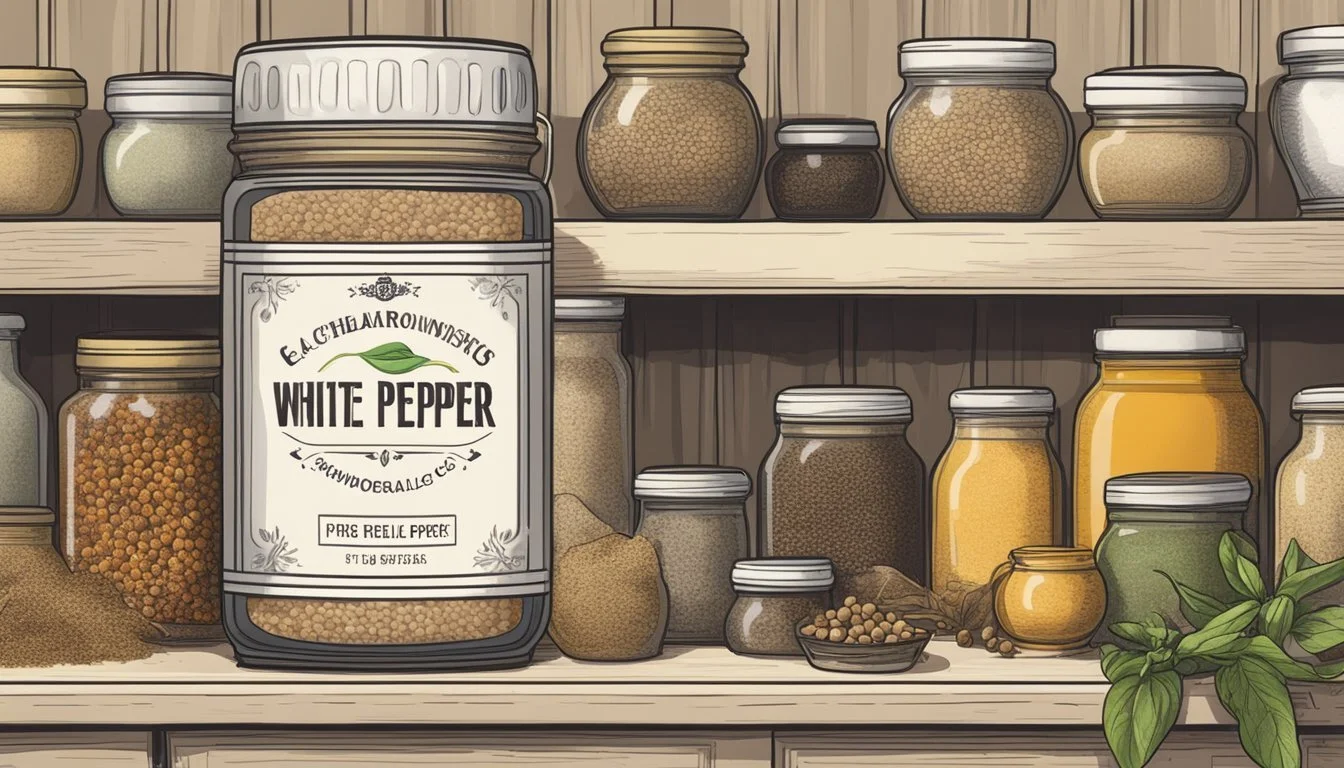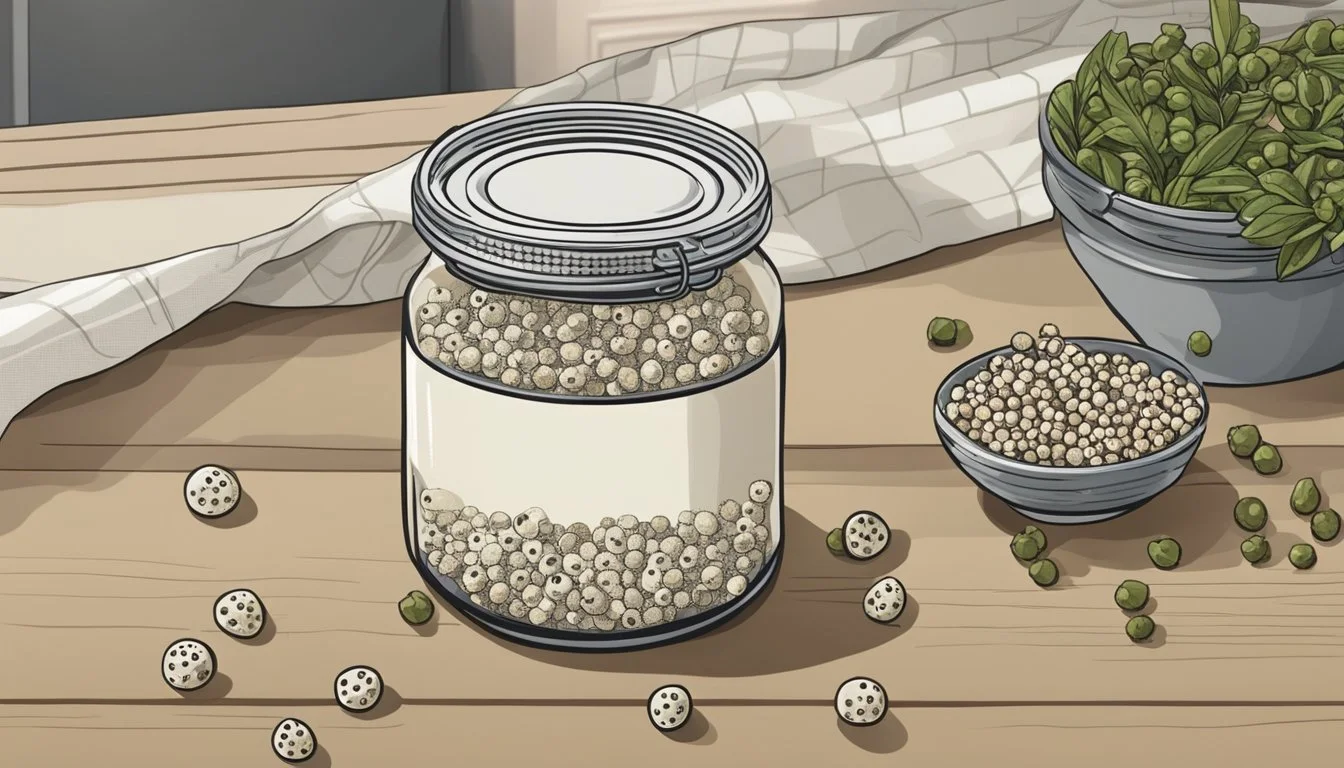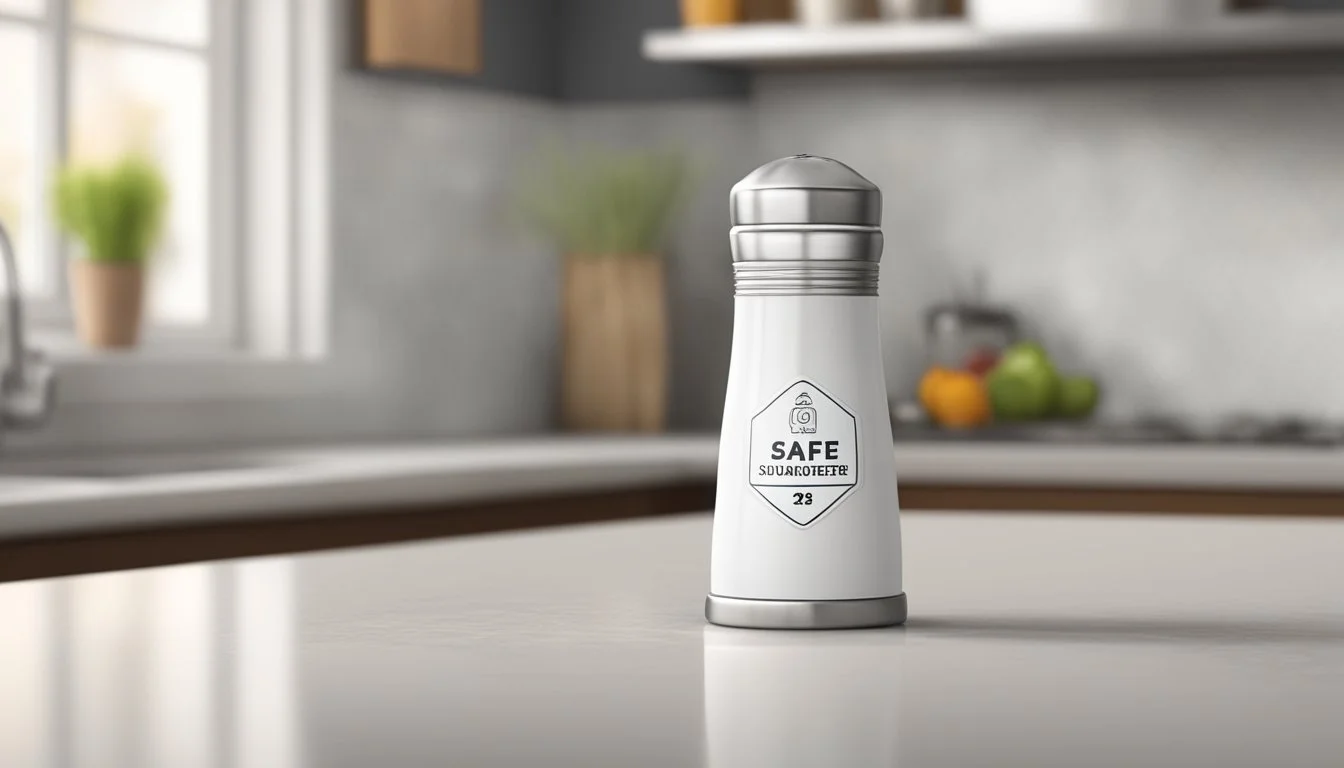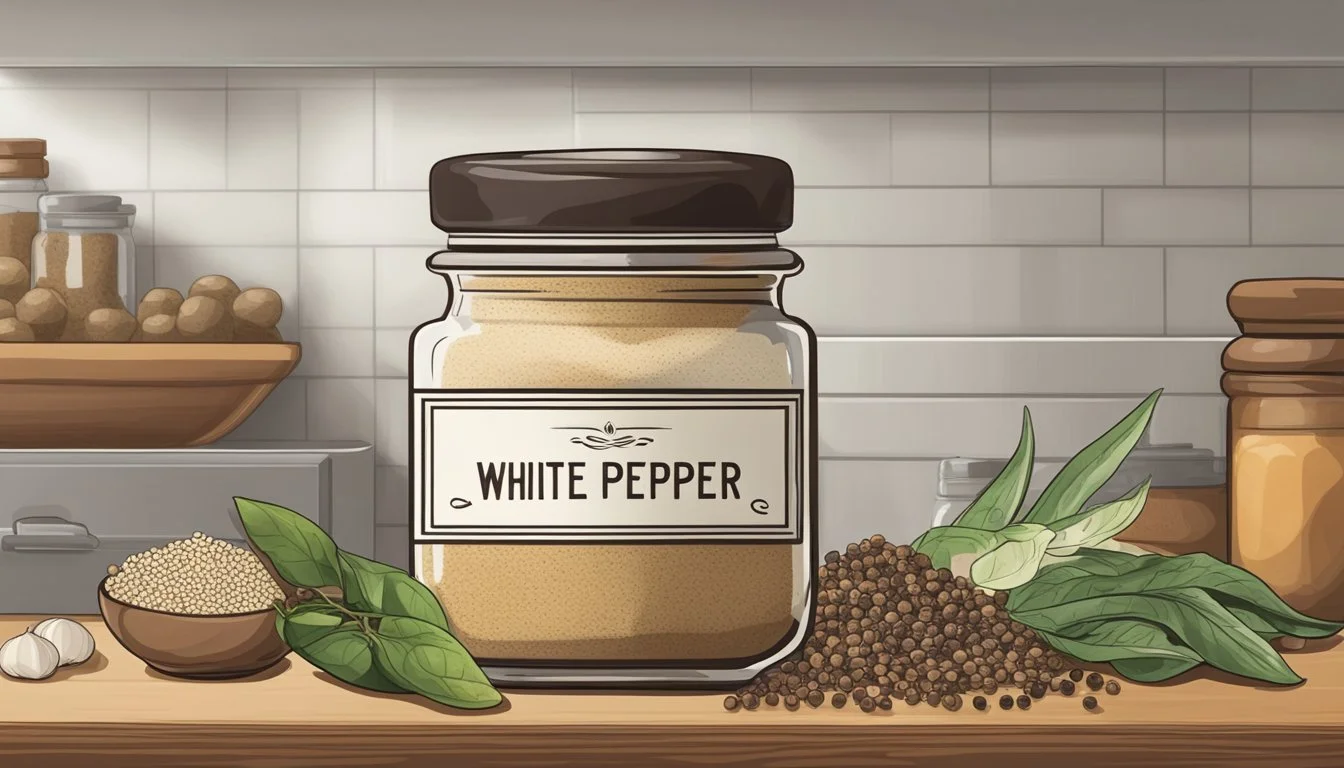Does White Pepper Go Bad?
Essential Shelf Life Information
White pepper, a versatile spice used in various global cuisines, is a staple in many kitchens for its unique flavor and aroma. Unlike black pepper, white pepper is derived from fully ripened berries with their outer layer removed, giving it a distinct taste and color. White pepper does go bad, typically due to exposure to heat, light, or improper storage.
When stored correctly, white pepper retains its potency and flavor for up to two or three years. However, it is ideal to use it within the first six months after opening to enjoy its full aromatic profile. Factors such as polyphenols play a crucial role in maintaining the spice's quality, but they can degrade over time if not stored in a cool, dark place.
Recognizing when white pepper has gone bad involves checking for changes in its scent and taste. Stale or musty odors often indicate that the pepper has lost its potency. Additionally, the spice may appear dull and lack the sharpness it initially had. Proper storage in airtight containers can help prolong the shelf life, ensuring that white pepper remains a valuable ingredient in your culinary arsenal.
The Basics of White Pepper
White pepper is a unique spice derived from the ripe berries of the pepper plant. It is appreciated for its milder flavor profile and is utilized in various global cuisines.
What Is White Pepper?
White pepper is made from fully ripe pepper berries. These berries have their outer skin removed before drying, which accounts for the difference in color and flavor compared to black pepper. The process involves soaking the ripe berries in water, fermenting them, and then removing the outer skin. This results in a spice that has a more subtle, less pungent taste and a distinct earthy aroma.
White Pepper vs. Black Pepper
The key difference between white and black pepper lies in their processing. Black pepper comes from unripe berries that are dried with their skins intact, giving it a stronger, more robust flavor. In contrast, white pepper uses ripe berries with the skin removed, leading to a milder taste. While black pepper is commonly used for its bold heat, white pepper is favored for dishes where a more delicate flavor is desired and where the presence of black specks is not wanted.
Culinary Uses
White pepper is prominent in many Asian cuisines, notably in Chinese and Vietnamese dishes. It flavors hot and sour soups and shrimp preparations. In European cooking, particularly Scandinavian recipes, white pepper is used to season dishes like Swedish meatballs. Its mild flavor makes it ideal for creamy sauces and light-colored dishes where black pepper's intense heat and color might overpower the dish. It is also a staple in various spice blends used in everyday cooking.
White pepper’s versatility extends to numerous dishes, providing a nuanced spice that enhances without overwhelming.
Storage and Shelf Life
White pepper, like many spices, has a distinct shelf life and requires proper storage to maintain its quality and freshness. This section explores the best ways to store white pepper, how long it lasts, and how to identify signs of spoilage.
Optimal Storage Conditions
White pepper should be stored in an airtight container to prevent exposure to air and moisture. A cool, dark place like a pantry or a kitchen cabinet is ideal. Avoid areas near heat sources such as stoves or ovens, as heat can degrade the spice's quality.
Light can also cause the pepper to lose its aroma and flavor, so choosing an opaque container, or storing it in a dark environment is important. Humidity is another factor to consider; keep white pepper away from any moisture, as it can lead to spoilage quickly.
How Long Does White Pepper Last?
When stored properly, white peppercorns can remain fresh for up to 4 years. Ground white pepper, on the other hand, usually has a shorter shelf life of approximately 1 to 2 years. The whole form of white pepper retains its flavor longer due to its protective outer shell.
It's important to regularly check the date of purchase and periodically assess the spice for its potency. Even if past the suggested shelf life, white pepper may still be usable but may not provide the desired flavor strength.
Signs of Spoilage
White pepper doesn’t spoil like perishable foods but can lose its potency. Key signs of spoilage include a loss of aroma and a diminished flavor. If the white pepper has clumped, become discolored, or developed an unusual odor, it may be compromised.
Using these indicators, users can determine if the spice is still effective. It's always a good practice to give white pepper a sniff test; if it lacks its distinctive pungency, it's likely time to replace it.
Recognizing Freshness and Spoilage
Identifying the freshness and spoilage of white pepper involves checking its appearance, texture, aroma, and taste. Knowing when to discard expired pepper is crucial to avoid harmful effects.
Appearance and Texture
Fresh white pepper should appear uniform in color with no visible mold or discoloration. The surface should be smooth and firm to the touch. If you notice fuzzy patches in colors like white, green, or black, these are signs of mold. Texture is also key in identifying spoilage. If the pepper feels soft or mushy rather than crisp and solid, it may be spoiled. Additionally, any presence of wrinkles on the outer skin indicates aging and reduced freshness.
Aroma and Taste
The aroma of white pepper should be potent and pungent. It should have a distinct, spicy smell. If the pepper emits a musty or off-putting odor, it has likely gone bad. In terms of taste, fresh white pepper presents a sharp, robust flavor. Spoiled pepper will often have a dull, flat taste. Any unusual or unpleasant aftertaste is a strong sign that the pepper is no longer fresh and should be discarded.
When to Discard Pepper
White pepper should be discarded if mold is present, as consuming moldy spices can lead to harmful effects. Any signs of a musty smell or strange taste also warrant disposal. Even if white pepper appears visually acceptable, a compromised smell or taste indicates it may have expired and should not be used. Proper storage in cool, dry places helps prolong the spice's life, but regular checks for the aforementioned signs are essential.
Proper Ways to Extend Pepper's Potency
Proper storage and handling of white pepper can significantly extend its potency. Key practices include using airtight containers and considering whether to freeze pepper or keep it in the pantry.
Best Practices for Longer Shelf Life
White pepper retains its flavor and aroma best when stored in an airtight container. Airtight containers prevent exposure to air, which can cause pepper to lose its potency faster.
Keep the container in a cool, dark place to minimize exposure to heat and light. Heat and light can accelerate the degradation process.
Whole peppercorns tend to last longer than ground pepper. For maximum freshness, it's advisable to grind pepper using a pepper mill or mortar and pestle just before use rather than storing pre-ground pepper.
Avoid moisture at all costs. Moisture can not only cause clumping but also invite mold and other contaminants that can spoil the pepper. Ensure that the storage location is dry and away from areas like the stove or sink.
To Freeze or Not to Freeze?
Freezing pepper is generally not recommended. Although freezing can prolong the life of many vegetables, pepper doesn't benefit similarly. Frozen ground pepper or whole peppercorns can absorb moisture when thawed, which may compromise their flavor and potency.
If you decide to freeze pepper, make sure it's in an airtight container to protect it from the moisture in the freezer.
Use small portions to avoid repeated thawing and refreezing, which can degrade the spice further. In most cases, room temperature storage in proper conditions is sufficient for maintaining the potency of white pepper.
Safe Usage of White Pepper
Proper use and storage of white pepper are essential to maintain its flavor and prevent health risks. Ensuring that white pepper is free from spoilage and understanding its impact on health can make your culinary experience both safe and enjoyable.
Cooking with Spoiled Pepper
Using spoiled white pepper in cooking can lead to compromised flavors and potential health risks. White pepper tends to lose its potency and develop off-flavors when exposed to heat, light, and moisture. When white pepper becomes spoiled, bacteria can grow, posing a health hazard.
It is crucial to store white pepper in a cool, dark place in an airtight container. Always check the spice for any unusual odors or mold before use. If you notice any signs of spoilage, discard the pepper to avoid ruining your dishes or risking illness.
Health Considerations
Consuming white pepper in moderate amounts is generally safe and offers various health benefits due to its rich content of vitamins and compounds like piperine. Regular use in food preparation is safe for most adults. However, excessive consumption can lead to digestive issues, especially in sensitive individuals.
Pregnant or breastfeeding women and children should avoid large quantities due to the potential for adverse effects. Using a spice grinder to prepare fresh pepper can also help in maximizing the pepper's benefits while ensuring that it is free from contaminants typically found in pre-ground varieties.
Miscellaneous Information
White pepper, a versatile spice, showcases unique types and enhances culinary experiences in specific ways.
Varieties and Alternatives
White pepper is derived from ripe peppercorns with the outer black shell removed, resulting in a milder and slightly fermented flavor compared to black pepper. Common varieties include Sarawak from Malaysia and Muntok from Indonesia, each offering subtle differences in pungency and aroma.
Alternatives to white pepper include black pepper, which comes from the same plant but retains a stronger flavor due to keeping the outer shell. Green peppercorns, harvested before ripening, can be used for a fresher, more vegetal taste. Freshly ground black pepper serves as a practical substitute, though it’s bolder and less subtle. It's essential to read labels to prevent unwanted additives or contaminants.
Maximizing Culinary Experience
To maximize the culinary experience with white pepper, store it in airtight containers away from heat and moisture to maintain its flavor. This spice pairs well with light-colored dishes where the black specks of black pepper might be visually unappealing.
Eggs and poultry benefit from its gentle heat and subtle flavor. It is also ideal for soups, sauces, and mashed potatoes due to its smoother heat and aromatic profile. Sprinkling white pepper toward the end of cooking helps preserve its delicate flavor. Combining it with a pinch of salt can enhance its taste, making dishes vibrant without overpowering other spices.







